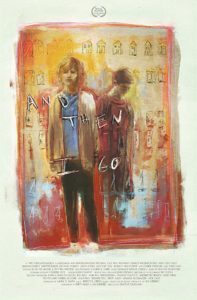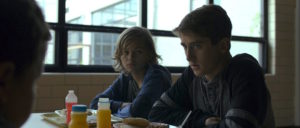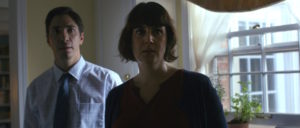Film Review: “And Then I Go” Is Powerful, Timely School-Shooting Drama
Written by: Christopher Llewellyn Reed | April 17th, 2018

And Then I Go (Vincent Grashaw, 2017) 4 out of 4 stars.
A heartbreaking, lyrical take on early-adolescent alienation, angst and anomie, And Then I Go, from director Vincent Grashaw (Coldwater), gets a digital and VOD release today from The Orchard (after almost a year on the festival circuit), a distributor devoted to small-budget independent cinema. We follow two junior-high boys as they conceive of and plan a school shooting. It’s the stuff of nightmares, rather than dreams, but the movie’s searing portrait of the pain of youth makes for extremely compelling viewing, as do the nuanced performances from lead actors Arman Darbo (Defenders of Life) and Sawyer Barth (Super Dark Times).
Darbo plays Edwin, not quite pubescent, whose long hair and high voice, combined with a tentative demeanor, mark him as odd in a the ever-competitive universe of school hierarchies. His shyness does not prevent him swearing at his teachers when he is caught unprepared for class, however, and we sense the weariness in slump of the counselor’s shoulders as he, yet again, issues a detention slip. Still, there is sweetness in Edwin, as witnessed by his loving relationship with his baby brother. He’s also good at art, and agrees to collaborate with two girls in his class on a competitive project.

Barth – who looks and sounds like a young Ben Foster – plays Roddy (nickname “Flake”), whose disaffection runs even deeper than that of Edwin, his only friend (and vice versa). Depressed and sullen, he has none of Edwin’s occasionally happy home life and all his rage. Together, they get into fights, either with bullies, or themselves, finding solace in their mutual status as outcasts. When Roddy finds his father’s new cache of guns, he quickly realizes that using them could be the way to make his mark (and take revenge on those who despise him). “Like those kids in Colorado?” muses Edwin. “No, better,” answers Roddy. And so is born a dark scheme.
Working with cinematographer Patrick Scola (Southside with You), Grashaw photographs every scene with careful compositions, imposing a powerful claustrophobia of ordered chaos as the choices Roddy and Edwin make increasingly limit their options. Yes, what they propose is horrific, but they are also still children, and so we keep hoping that someone, or something, somewhere, will set them on a different path. The film is as much as condemnation of adult cluelessness as anything else. Playing those hapless older folks are the likes of Tony Hale (Gary on HBO’s Veep), Melanie Lynskey (Little Boxes) and Justin Long (Lavender), all fine actors who convey sincerity and ineptitude with dreary verisimilitude. Try as they might – perhaps because they simply cannot imagine the unimaginable – they miss all signs of the impending apocalypse.

School shootings have become such a staple of American life that it’s not even worth hyperlinking to any of them in this review; we all know we have a societal problem. One of the great strengths of this film is the way in which it chronicles the breakdown that leads to the inevitable conclusion, allowing room for the humanity of the perpetrators, without in any way condoning their reasoning. Beautiful and haunting, And Then I Go is a vital work of art, and a must-see movie for our time.

